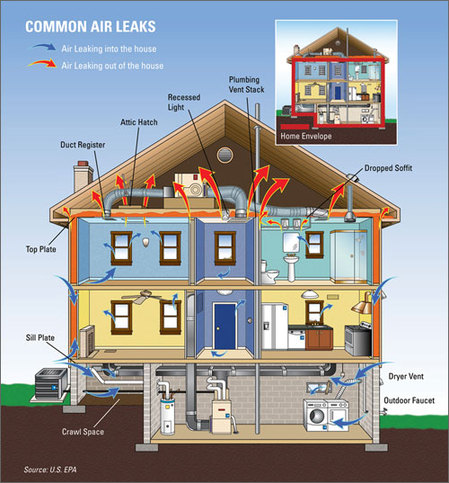|
The building envelope is the separation between the interior and exterior environments of a building. It serves as the outer shell to protect the indoor environment and also facilitates its climate control. Understanding the building envelope includes a knowledge of structural integrity, moisture and temperature control, as well as control of the air pressure boundaries. The control of air includes movement of air through the components of the building envelope as well as into and out of the interior space. This air movement can affect building insulation greatly.
Common measures of the effectiveness of a building envelope include physical protection from weather and climate, indoor air quality, durability and energy efficiency. In order to achieve these objectives, all building enclosure systems must include a solid structure, a drainage plane, an air barrier, a thermal barrier, and possibly a vapor barrier, as well. |
|
|


